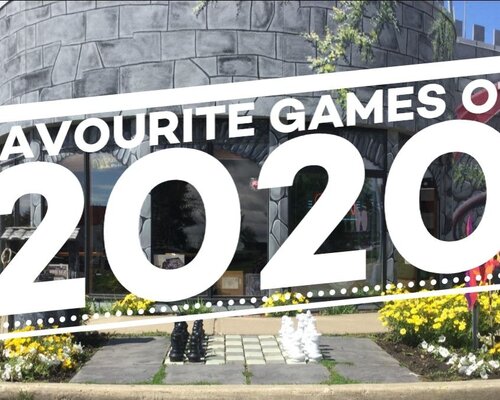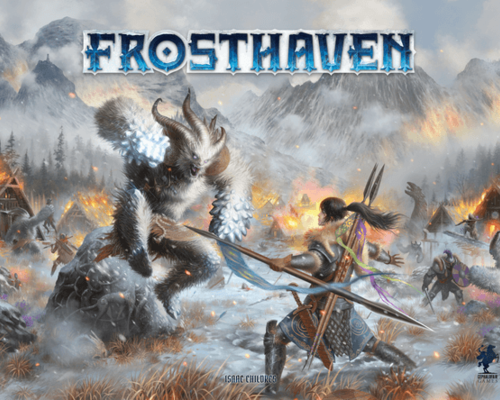In our first post of 2019, Leah explores the many ways that tabletop game developers have met the challenge of designing games aimed at a diverse player base. From text, to art, to gameplay, the myriad elements that designers use to reflect the spectrum of human experience in their work shows how a little bit of time spent thinking outside one's own box can lead to the creation of amazing games.
(A note: I identify as queer cisfem - a phrase which here means, "not heterosexual, identifying with the gender she was assigned at birth". I am also white. My experiences are therefore viewed through that lens, and the struggles - and privileges!--that come with those identifiers.)
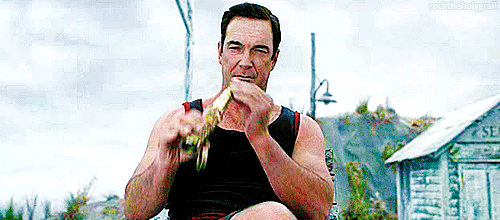
We live in politically charged times. Conversations about personal identity, and about the representation of the full spectrum of personal identities in our media and culture, are commonplace; while we, as a Western society, are perhaps more progressive than we've ever been before, the push back against those progressive attitudes is also more prominent. Individuals who belong to marginalized or underrepresented communities feel as though they are constantly waging a war against the status quo, pushing for better representation of various racial, sexual, and gender identities in the media we consume, which has such a deep and vital impact on the evolution of our culture as a whole.
Sometimes these voices go unheard, as media heroes rarely stray from the traditional archetype (think Indiana Jones, Jason Bourne, Ethan Hunt), and movies repeatedly fail to avoid problematic tropes; sometimes, studios, producers, and casting directors make an imperfect effort, or their efforts are drowned out by the voices of detractors (from both sides!); but more and more often, it seems like people out there are trying, and more and more often, they're getting it right.
There's a lot of discussion out there on the Internet about this evolution of representation in movies, in books, in TV shows and stage plays and comic books and all other sorts of visual mediums... but here on boardgames.ca, we're all about - obviously - board games, and those are evolving, too.
***
The Dungeons & Dragons flag has long been one waved by individuals who feel like they don't quite fit in--the nerds, the geeks, the bookworms - but its open world and encouragement of imagination also extends to members of POC (Peole of Colour) and queer communities. It is a fantasy world, after all; and while our cultural tropes are as pervasive as ever (when was the last time you saw a brown-skinned elf in a movie, for instance?), there is nothing in the game rules that says you can't represent yourself in the skin colour of your half-elf monk, or that your tiefling warlock can't fall for the princess instead of the prince.
However, that has always felt somewhat disingenuous - like getting away with something on a technicality. After all, the game of D&D has been around in some form or another since the 70s, and attitudes have certainly not always been as accepting, on balance, as they are now. It was so refreshing, then, to be flipping through my brand new copy of the Dungeons & Dragons: Fifth Edition Player's Handbook back in 2014, and come across this on the very first page of Chapter Four: Personality and Background (p. 121):


As far as I can remember, this was my first experience of coming across anything, in any table top game, that encouraged players to think outside the typical gender binary; and while it's phrased as a thought experiment, a challenge, within those lines is also an implicit acceptance of individual players who might not "conform to the broader culture's expectations of sex, gender, and sexual behavior".
"You have a place in this world," is what I read between the lines. "You can exist here, too."
It's two paragraphs in a 316-page book; a small gesture, some might say a token effort. But the fact that it was there, in print, that the editors and designers felt it important enough to include - for a young kid questioning their identity, or even an adult still struggling with who they are and how they fit in? It can be hugely affirming. To quote Victoria McNally in her article for The Mary Sue, a geeky feminist news site: "...putting down the idea of non-binary gender in writing... is pretty awesome on the part of Wizards of the Coast, in part because talking about differences in gender both normalizes those differences and creates valuable resources for the real-life people who identify with them."
The same can be said for representations of race in the Player's Handbook. Dungeons and Dragons is a fantasy world, and certainly shouldn't be constrained by our own Earth. When you've got folks with fiendish blood, or draconic scales, or deep purple skin, the different variations of black and brown and white that we Earthly humans have struggled with for decades feel a little more insignificant. Yet despite that, there is art all throughout the sourcebooks - and many of the others! - that prominently features characters of colour. By the time they put that book out in 2014, Wizards of the Coast had figured out what a lot of folks still seem to struggle with; that including representation costs them nothing, but could mean everything to the people searching for themselves in those pages.

Of course, not all games are quite as open-ended as Dungeons & Dragons is. It is a very special, very specific type of game that allows for the wide spread of diversity that a game fully rooted in imagination can manage. There are plenty of board and card games that invite players to inhabit the persona of a character, but typically, it's within the constraints of what's already been designed. Game designers can put in the extra effort to include, say, both male and female version of player boards (used well in 5-Minute Madness, Imperial Settlers, and others), or a diverse array (Detective: A Modern Crime Board Game, Above and Below), but often that's as far as that effort of inclusion goes.
Something else I've come to appreciate, then, is when designers acknowledge the limits of what they've provided players, and make an effort to recognize that just because you don't see your reflection in the game doesn't mean the game isn't welcoming to you. There is too much diversity in the world to represent it all accurately in a $20 card game, after all! But making those efforts, no matter how small it may seem, can be hugely affecting. A recent game that did this very, very well, in my opinion, is Sparkle*Kitty.

Sparkle*Kitty is a pretty mindless, Uno-style card game (although, don't get me wrong - it's a TON of fun!). In it, the players embody princesses locked in a tower by the evil queen Sparkle Kitty, who have to free themselves by casting a series of "sugar/spice/everything-nice" style spells. It's quick, it's silly - and it's one of my favourite releases of 2018, with an addictive game design and bright, beautiful art.
That bright, beautiful art is one of the best things about this game. Each player gets to choose one of the included princesses to play as, a decision which has absolutely no impact on the game itself, but tons of impact on the players, because the included array is as beautiful and diverse as the rainbow that graces the front of the box. Often-underrepresented races get their chance to shine, from the Latinx "La Princessa" to the Northern-Indigenous "Princess Frosting", and even many of the other princesses, whose races aren't tied to their identities quite as strongly, showcase the diverse beauty of the human race. "Princess Bookworm" is one, with her warm brown skin, and the Mulan-inspired "Princess Bizness" is another. Not only that, but the diversity of princesses also spans gender presentation and body shape, something else that often gets overlooked. The aforementioned "Princess Bizness" is dressed in androgynous business-casual fashion, for instance; and my personal fave, "Princess Punch", is ready to kick butt and take names.

But beyond the inclusivity of the art is perhaps my favourite part of the game design: the box. Specifically, the bottom of the second edition box, which clearly informs all comers that Sparkle*Kitty is "fun for all ages and princesses of every size, shape, and gender" (a statement which is also made very clear on Breaking Games' website). One of the most pervasive ideas we currently wrestle with, especially when it comes to kids' products, is the idea that everything needs to be split on a gender spectrum. Think back to the last time you were in a Toys 'R Us--the dichotomy of the aisles dominated by pink and pastel on one side, with black and yellow and red and... well, everything NOT pink and pastel on the other. We even get it here at the Castle: well-meaning folks who come in and ask for recommendations for kids, and who feel like they have to then ask, "But will this be fun for boys/girls?"
There is no reason guys can't play a game about being a badass princess busting her way out of captivity; there is no reason a little boy can't pretend to be a princess. It doesn't have to say anything about your gender identity, your sexuality, or how much/what kind of a man or woman you are: games are about fun, and fun doesn't discriminate. I'm certain that most game designers aren't intending to be exclusive with the choices they make in their designs, and might not even be thinking about it, but folks who don't fit into the default are constantly aware of the tiny ways they might be made to feel invisible, if not downright unwelcome, around the table. Sparkle*Kitty is aware of it, too, and every choice they've made makes it very clear that the intended audience for their game is everyone.
That message becomes even more meaningful when your game is aimed at kids. Kids are so susceptible to the subconscious messages that media and culture is sending them; it can take years, decades, even, to unlearn messages and behaviours that are picked up in childhood. The importance of diverse representation to kids is obvious whenever you look at the reaction to new Disney princesses: the excitement of black kids when The Princess and the Frog came out, or for Latinx kids who are exposed for the first time to Elena of Avalor, or most recently, kids with Polynesian heritage who got to see themselves on the screen in Moana. But the impact is felt by their parents, too, who grew up with early Disney, with the cookie-cutter white Princesses of those movies (and the occasional Mulan or Jasmine).
Fairy tales, Disneyfied or no, are such a ubiquitous part of many childhoods, and they are one of the most egregious offenders when it comes to representation, partially due to the Disney Corporation's monopoly on our imaginations.
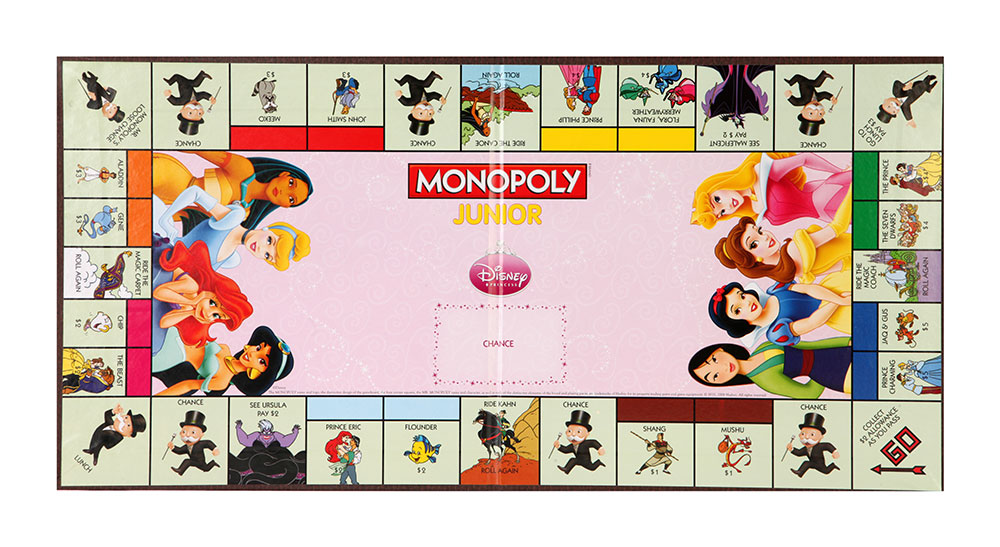
However, due to their status in the public domain, they are also one of the most-easily adaptable. There are countless board games on the market based on either individual fairy tales (Iello's "Tales and Games" series comes to mind) or on the "world" of fairytales in general (Once Upon a Time, Winter Tales, Dark Tales, Tales of the Arabian Nights). These games all go to different lengths to insert additional diversity into their worlds, with...some doing a better job of it than others.

The Grimm Forest, by Druid City Games and Skybound Games, is one such game. It takes place in the eponymous "Grimm Forest", a land that might feel familiar to fans of ABC's Once Upon a Time - a place where all fairy tales intersect, where Rapunzel lives next door to Red Riding Hood and Thumbelina might knock on Aladdin's door. The game itself is a pretty simple one of action selection and resource gathering, with a bit of hand management on the side; you play as a cousin of the famed Three Little Pigs, vying for a lucrative development contract to build homes on the land.
But this game blew me away with the art direction. Fanning out the cards for the first time revealed such a diversity of cast, and in a way that didn't feel like token representation at all. Loving care and thought was put into the design of each and every character, with attention paid to the origins of their tales and then, even more, to those characters whose origins could be reimagined.
This is a very rare thing when it comes to representation in media. While most people won't disagree that yes, there should be more characters of colour, many folks will balk if it is suggested that we should take a character who is usually white, and cast them as POC (or a character who is typically male, and cast them as female). One of the most recent runs of the Thor comics featured a female Thor, for instance. A Puerto Rican playwright made waves, and probably theatre history, when he wrote and cast a highly-successful Broadway musical about American history that featured a 95% POC cast, including a black George Washington and a Latino Alexander Hamilton (you've probably heard of it).

There is a really well-written analogy for this phenomenon, as well as for why representation is so, so important in media. It features chocolate-covered raisins, and I highly recommend everyone check it out, as it illustrates in a very clear way exactly why this kind of representation is so important. To sum it up, though: there are two bowls of chocolate covered raisins. One, which represents White Characters in media, is practically overflowing; the other, representing POC Characters, has only a scant handful. If you take one raisin out of the bowl that only has a few raisins, it looks even emptier than before. But taking one out of the overflowing bowl makes no difference; and adding it to the one that is nearly empty has an immediate, visible impact.

With that analogy in mind, The Grimm Forest took an absolute fistful of raisins out of the overflowing bowl, and dumped them all into the one that was almost empty. They didn't just satisfy themselves with making the obvious choices, like a Polynesian Little Mermaid; the art direction features a Chinese Snow White, a black Huntsman, and an East Indian Sleeping Beauty, among so many others. Even those characters who are still Caucasian have their own levels of representation, with cards like Thumbelina featuring what looks like a Northern European girl in traditional cultural garb.
(Plus, the art design is absolutely gorgeous, which is always a major plus in my book!)
I was so blown away by what I found--by the innovation of it, by the weight of it--when I opened the box, that I immediately took to social media to post about this game to my friends. It felt that important, that substantial, and I wanted everyone to know. I wanted people in my circle to play and get excited about this game, to support the publisher, but I also wanted everyone to see that it really shouldn't be that difficult to do. I wanted other publishers to take note, and I wanted other players to ask for the same or better from their favourite board game designers, too.
What I didn't expect was to get a response directly from Druid City Games:
"Mr. Cuddington, Tim Eisner, and ourselves feel VERY STRONGLY about being as inclusive as possible. Honestly, it's not very hard to reflect the world we live in with the art and characters that we choose to put in our games. It seems pretty simple, we hope that other publishers follow suit and we start seeing everyone represented in board games. This is important and we don't plan on stopping with any of our games!"
I couldn't agree more.
***
Diversity of gender identity and attraction, however, is a little harder to manage, mostly because many games don't really deal with those subjects at all.
One of the easiest ways for games to promote inclusivity is just to print a gender neutral rulebook, using they/them pronouns to refer to the players rather than gender-specific terms. Games can go a little farther by continuing to use gender-neutral terms in their specific play examples, like: "Alex wants to use their turn to claim a resource". And if a game includes story-telling elements, designers can choose to include alternate gender expressions or queer relationships as components of the NPCs characters. But being very specifically inclusive to the full range of identities takes a very specific type of game.
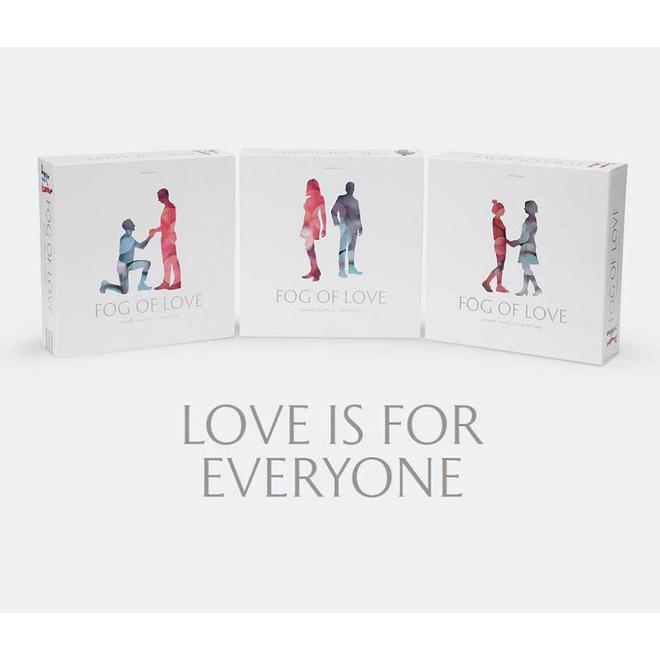
When Fog of Love first hit the tables of gamers everywhere, the designers were incredibly cognizant of the diversity that exists in the game-playing community. The very first question on their FAQ makes it clear that, despite the themes of pink/blue and the man and woman silhouetted on the front cover of the game, the game is intended for everyone: "Every scene card in the game has been written to apply to any gender or relationship." That effort is clearly realized in the game's cards; with very few exceptions, most of the game's cards have nothing to indicate the sexual orientation or gender identity of the characters that players are being invited to create. My wife and I have played out stories between characters that fall all over the various spectrums, and only rarely have we hit upon any hiccups, bumps in the road--and haven't we all heard that "the course of true love never did run smooth"?
Of course, despite the best of intentions, it still remains very difficult for any publisher - whether a single individual, a small team, or a huge company - to get everything right, especially when they themselves aren't necessarily members of any marginalized or under-represented groups. Individuals of the various LGBTQ+ communities have provided feedback to Fog of Love designers and publishers since the game's release, pointing out places where the cards fell short, where the effort to circumvent specifications of gender or sexuality made storytelling awkward, or alienated members of those communities from the stories they were trying to craft themselves.
As a big fan of the original game who also made note of many of those same small foibles, I fully expected that nothing would ever come of it. Maybe one day down the road we would get a specifically LGBTQ+ expansion; a story "just for us". Unlikely, given the wide diversity of queer lives and experiences, but...maybe? And in the meantime, Fog of Love did more than just about any other game I'd ever played, and did so admirably. It was unequivocally a step in the right direction, and that means a lot, especially in this day and age.
In my experience, when complaints are raised about a piece of media - a movie, television show, video game, book, what have you--and specifically that piece of media's less than perfect attempts at inclusion and diversity, one of two things can happen. Either the creators push back:
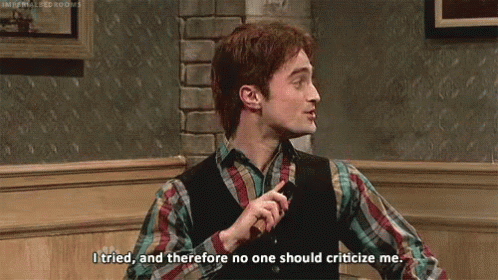
or complaints fall on seemingly deaf ears, and nothing happens.
It was unbelievably refreshing, therefore, to find out that not only had Fog of Love designer Jacob Jaskov heard player feedback, but he understood entirely where it was coming from and was willing to acknowledge his own lack of personal experience. "I’m a heterosexual male and no matter how much I tried, there were a few details I was bound to miss or be inadvertently blind to," does not sound like it should be a revolutionary statement; yet that simple acknowledgement spoke volumes.
Fog of Love partnered with their original artist to design two new covers for the game, featuring silhouettes of same-sex couples, to be made available at retail. Not only that, but they partnered with game designer Nikki Valens, a member of the queer and transgender communities, to painstakingly pore over all of the original game content and identify those cards and scenarios that were obstacles to the inclusivity that Jacob had intended for his game. The revisions that were eventually made are permanent changes to the game, changes that will be present in all future editions and, hopefully, in an upgrade pack made available to those of us who already own Fog of Love and are looking for a game experience that is a little more true to who we are. Nikki is also currently designing an expansion for the game with a direct focus on telling "stories about exploring gender identity and attraction"--one more sincerely appreciated step towards unambiguous representation.
***
As Druid City says, representation of diversity in board games is simple. While thinking of it in the first place still isn't second nature to most, we are getting there, and for those who think of it, it costs nothing to include some non-white characters in their art, or non-straight characters in their cast or game components. It costs nothing to do a Find/Replace and change out the "he"s and "she"s for "they"s, or to change the pronoun of a character's spouse or partner to something a little more inclusive.
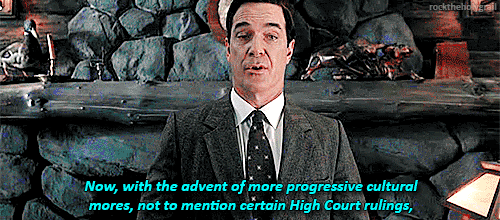
But what it does take is time, and effort, and the ability to step outside of oneself; to employ empathy and attempt to view the world through a lens other than one's own. To walk a mile in someone else's shoes. There are a lot of big corporations out there who are still resistant to this idea; progress can sometimes seem agonizingly slow when it comes to diversity and representation on the big screen, for example, and even then, it can feel more like "one step forward, two steps back".
But what is really great about board games is that more than any other, this hobby of ours is a form of media that is all about connecting to one another. It is about sitting down around a table with people that we call friends, and who we love exactly as they are, and spending time enjoying each other's company (while also competing for absolute superiority, of course). It makes sense to want everyone at the table to feel represented; to feel valued; to feel seen.
These are some steps in the right direction, and I'm hopeful there will be many, many more.
***
Further reading and sources:
Victoria McNally's article for The Mary Sue on D&D 5e: https://www.themarysue.com/basic-rules-dnd/
The Chocolate-Covered Raisin Analogy: http://timemachineyeah.tumblr.com/post/58648290519/this-is-a-jar-full-of-major-characters
Reddit AMA with Jacob and Nikki, about the LGBTQ revisions to Fog of Love: https://www.reddit.com/r/boardgames/comments/9nd3s4/ama_love_is_for_everyone_nikki_valens_eldritch/
Forum topic on Fog of Love LGBTQ representation on BoardGameGeek: https://boardgamegeek.com/thread/2074334/love-everyone-new-fog-love-lgbtq-covers-revealed-p
Fog of Love FAQ: https://www.fogoflove.com/faq



